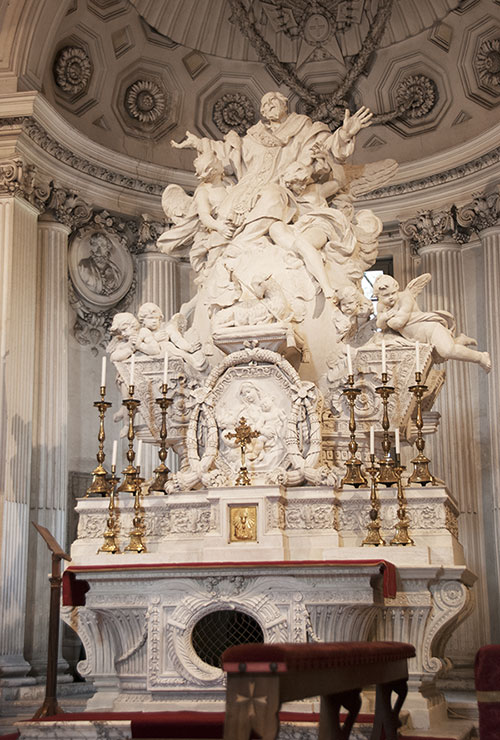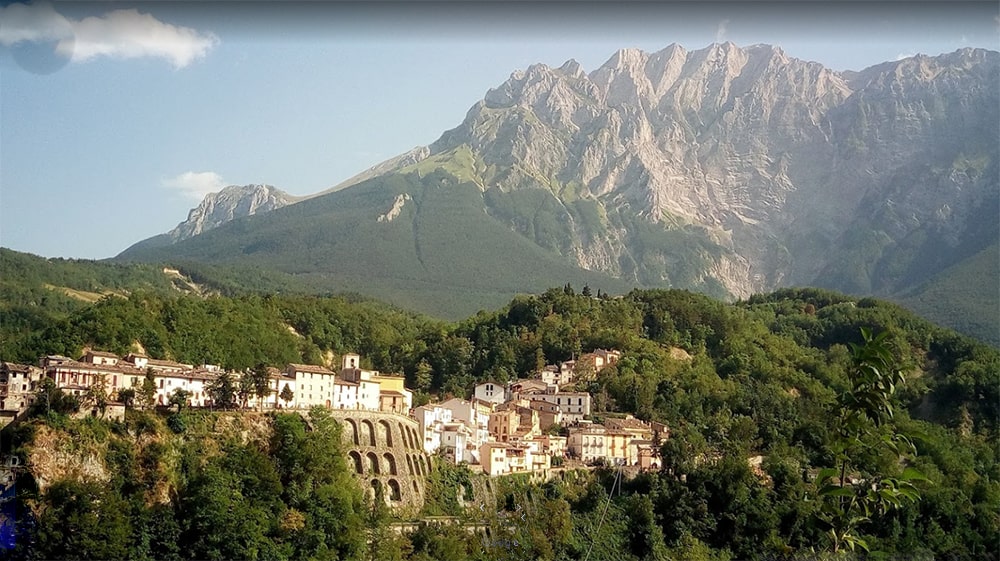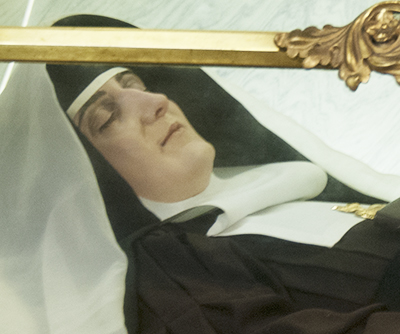Baroque was the dominant style in and much of Europe in the 1600’s. Wild and colourful, creative, surprising – theatrical – all these terms explain the style well. It was also a response to the Protestant Reformation, and part of the Catholic Renewal. A creative explosion took place, and the 1600’s artists competed to find the most vivid expressions of Catholic spirituality and tradition.
The 1700’s brought the emergence of the Enlightenment, and with it the famous anti-Christian movement known as Freemasonry. A pseudo religion with secret, complicated and varying rituals, Freemasonry is famous for its use of symbols: The ‘all-seeing eye’, architectural tools, the pyramid (often mistaken for a symbol of the Trinity), “Chaos” and other symbols that might not appear significant, but for the Freemasons, those symbols represented their identity.
Portoghese Freemasons
In 1712, Marquis de Fontes was appointed Portuguese Ambassador to Pope Clement XI. Carlo Gimach, a Portuguese architect, became his constant companion and adviser. This same year, Don Nuno di Cunha was created Cardinal and Protector of the Roman church of Sant’Anastasia in Rome. Naturally, he selected Gimach to restore the church.
Gimach rendered a beautiful late baroque design … with hidden masonic symbols throughout – because the whole party were freemasons. After the work was done, the happy group slapped each other on the back – and went home – back to Portugal. The monsignor of the church then had all the masonic symbols removed and painted the whole thing white.
One trinket that remains from the masonic makeover is a commemorative marble tablet which goes to great length to explain that Gimach was born in Malta of a Palestinian family, “descendant of the ancient and orthodox dynasty of Rama”. In other words, a Freemason’s Freemason. At this time, some Knights of Malta were also Freemasons.
Another curious trinket of the time is this inscription, obviously re-written.
In 1738 Pope Clement XII issued his famous Bull ‘In Eminenti Apostolatus Specula’, which condemned and excommunicated members of the freemasonic cult. Most European countries made membership and its existence illegal – no one wants their king, Prime Minister or president to be in a secret cult.
.
Piranesi, Freemason
Later, the area around the Spanish Steps was transformed into a “free zone” – economically, to develop the area – but also for the circulation of ideas inspired by the presence of freemasons or their sympathisers: Piranesi lived in via Felice, today’s Via Sistina, and his home became a meeting place for artists, intellectuals and writers. To be fair, it was Napoleon who initially unleashed ‘Egyptomania’ on Europe in the early 1800’s, so every time one sees an Egyptian motif, it doesn’t necessary = freemason … but –
Earlier, in 1765, Piranesi had been chosen as chief architect for the Knights of Malta residence on the Aventine hill (famous for its keyhole view of St. Peters).
This chaotic main altar here is typical of freemasons – not one cohesive theme, but a combination of everything, all at once. The main altar of a Catholic church should not be a distracting mess. But, freemasons want you to be busy, occupied – they don’t want you to think.
.
..
.
.
The Main Altar at the Church of the Gesù
Tabernacle by Giacomo della Porta. Inlaid marble.
The first high altar for the Gesù was designed by Giacomo della Porta. This was the tabernacle, preserved and purchased for another part of the world.
It was removed during 1841-1843, when Antonio Sarti created a new altar by the will of Alessandro Torlonia. Torlonia was a freemason, as evidenced by the symbol for ‘chaos’ (the ‘x’ and ‘+’ sign combined) surrounding his villa on via Nomentana – the same symbol that is found on the Italian National Monument, the courthouse and other monuments still visible in Rome, all created by the Freemasons while they were in political power.
.
.
.
.
.
..
.
.
.
.
The original altar painting by Girolamo Muziano (baby Jesus does not look good.) was also preserved, and is kept in a back corner of the sacristy. So, the original tabernacle was preserved and sold; the original altar painting was preserved and kept (probably because it couldn’t be sold) … but they destroyed the funerary monument to Cardinal Bellermine.
While redesigning the altar, Sarti took the occasion to destroy the funery monument to a certain Cardinal Robert Bellarmine, which had been designed by Girolamo Rainaldi and sculpted by Pietro Bernini (father of the more famous Gian Lorenzo Bernini) and Giuliano Finelli (the detail master of the statue group Apollo and Daphne, located in the Galleria Borghese). Now, the Bellarmine monument wasn’t an earth-shatteringly new artistic piece, but destroying previous works at this time is a little unusual, especially with names as big as these.
Notice any similarities with the first picture in this article? As an aside, Ferdinando Fuga was the first to not destroy previous artwork – when he created the facade for St. Mary Majors (completed 1741), he preserved the original mosaic work from the 1200’s.
The triangle was rarely used as a symbol for the Trinity.
.
.
.
.
.
Bruno, Freemason Mascot
Almost fifty years after the Bellarmine monument was destroyed (1841ca.), the Freemasons erected a statue of Giordano Bruno in Campo dei Fiori (1889). Bruno had been burned alive there in the year 1600 for not refuting his heretical (and positively stupid by anyone’s standard) positions.
The cardinal who had been in charge of those proceedings was Robert Bellarmine. Apparently in response to all of this, in 1923 the Church recognised Cardinal Bellarmine as ‘Blessed’ (38 years after the Bruno statue was put in place). In 1930, the Church recognised Bellarmine’s sainthood, and in 1931 he was named Doctor of the Church.
Almost fifty years after the Bellarmine monument was destroyed (1841ca.), the Freemasons erected a statue of Giordano Bruno in Campo dei Fiori (1889). Bruno had been burned alive there in the year 1600 for not refuting his heretical (and positively stupid by anyone’s standard) positions. The cardinal who had been in charge of those proceedings was Robert Bellarmine. Apparently in response to all of this, in 1923 the Church recognised Cardinal Bellarmine as ‘Blessed’ (38 years after the Bruno statue was put in place). In 1930, the Church recognised Bellarmine’s sainthood, and in 1931 he was named Doctor of the Church.
.
.
.
.
Santa Trinità dei Pellegrini
The same freemason architect who worked at the Gesù, Antonio Sarti, also redecorated Santa Trinità dei Pellegrini, in 1853.
Here we can see a much heavier masonic footprint, possibly because this is a church that is tucked into a side street. The Gesù is very prominent – on the main street leading from St. Peters to the Cathedral of Rome. One can see the pyramid, again – this time with the eye of Horus in the centre (Egyptian brand freemasonry), and he apparently also designed the candlestick-holders, tapestries and reliquaries with the same pyramid and Horus eye, to the apparent ignorance of the many priests who have worked there.
Art and architecture can be used to express an idea, or to suppress it; it can be used to create a positive or negative influence on any person, place or thing. Art and architecture mould our attitudes – it can make you feel welcome or unwelcome.
Art communicates. If you know the language, then Rome is dazzling. If you don’t know the language …then stick with us.



















